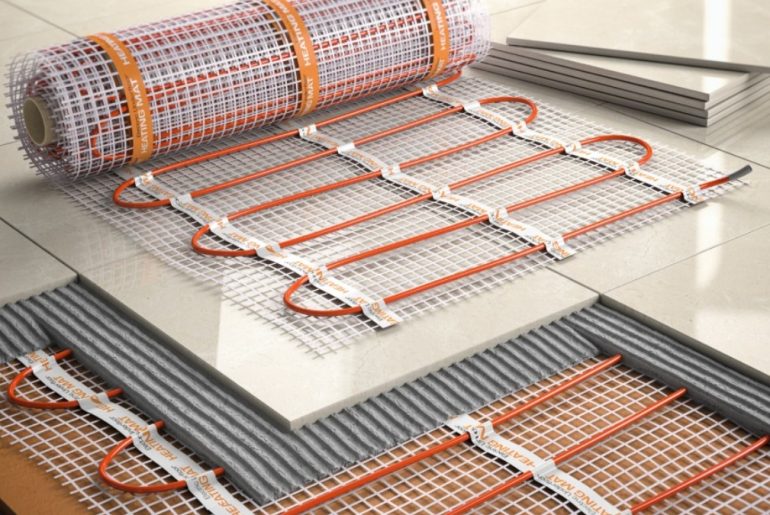If you are looking for underfloor heating in Australia, you will face two options: electric underfloor heating and underfloor hydronic heating. Both have their unique strengths, but what makes them significantly different from one another is their power resources.
If you have decided that the electric-based system perfectly meets your needs instead of underfloor hydronic heating, then you will have to pick one among several types available from this heating system. It may be confusing at the beginning, but once you have gained more knowledge about each option, the selection process will be easier. This article will guide you through the details that are necessary for your consideration.
During your research, you will discover many brands offering their products but generally, you will encounter four kinds of electric underfloor heating as follows:
1. Pre-spaced mesh mat system
This type consists of long heating wires linked to a mesh mat. It is recommended to use a system that has a self-adhesive feature, as it will allow you to simply stick the mat directly to the insulating board. This system is classified into several types and it is suitable for different sizes of spaces, such as:
- 100W/m2: great for a smaller room that is often used and needs to be warmed throughout the day.
- 150W/m2: excellent for medium-sized rooms and a perfect fit for keeping the warm temperature optimal with minimal loss.
- 200W/m2: most suitable for a large space that has a higher potential for heat loss. It ensures that the room maintains a comfortable temperature despite the challenges of insulation.
2. Heating and decoupling system
It consists of two elements, such as a coil of heating wire and a decoupling membrane mat to protect the floors from breaking down. It decreases the potential danger or harm due to the floor movement from expansion and contraction. This technology is commonly used for moist rooms because it features a water-resistant layer, so it guarantees safety for wet spaces.
3. Foil system
This is designed to effectively generate heat towards laminate flooring surfaces such as vinyl, wood, and carpet. The whole innovation is intentionally intended to avoid producing excessive heat to the soft surfaces. The wire is usually coated with two layers of foil which is the important key to efficient thermal transfer.
4. In-screed system
This technology is recommended for new constructions or major renovations because the installation process is more complex than the other types. The system is ideal for rooms that are in constant use.
Furthermore, another tip that you need to know is that if you want to generate heat in a shorter time, it is important to increase the wattage of the system. However, it is best to discuss with a reliable professional to ensure that the entire system will not surpass the maximum capacity of your power supply.
In conclusion, electric underfloor heating is varied, but you need to make a choice of one that can meet your requirements to heat your property. Properly evaluating your space and consulting with a professional can help ensure you choose the most effective solution to heat your property

